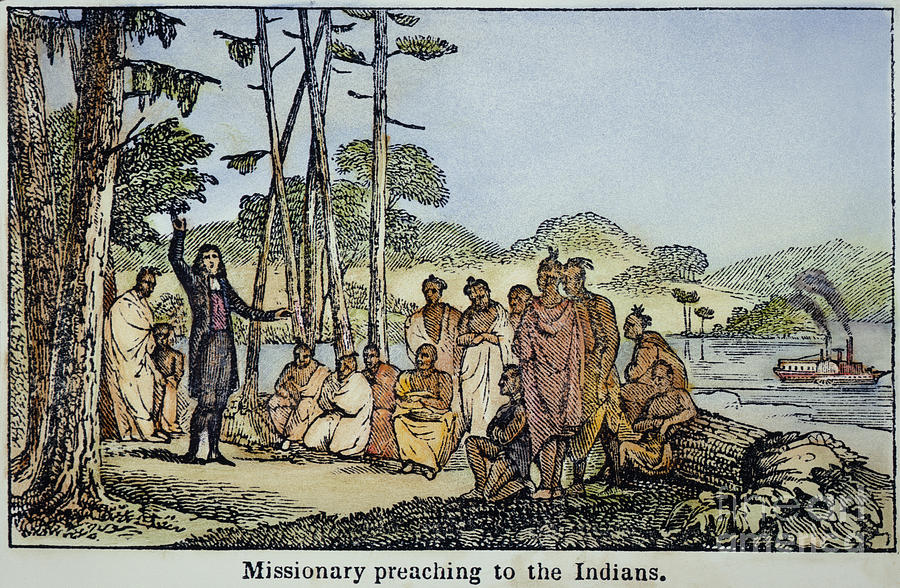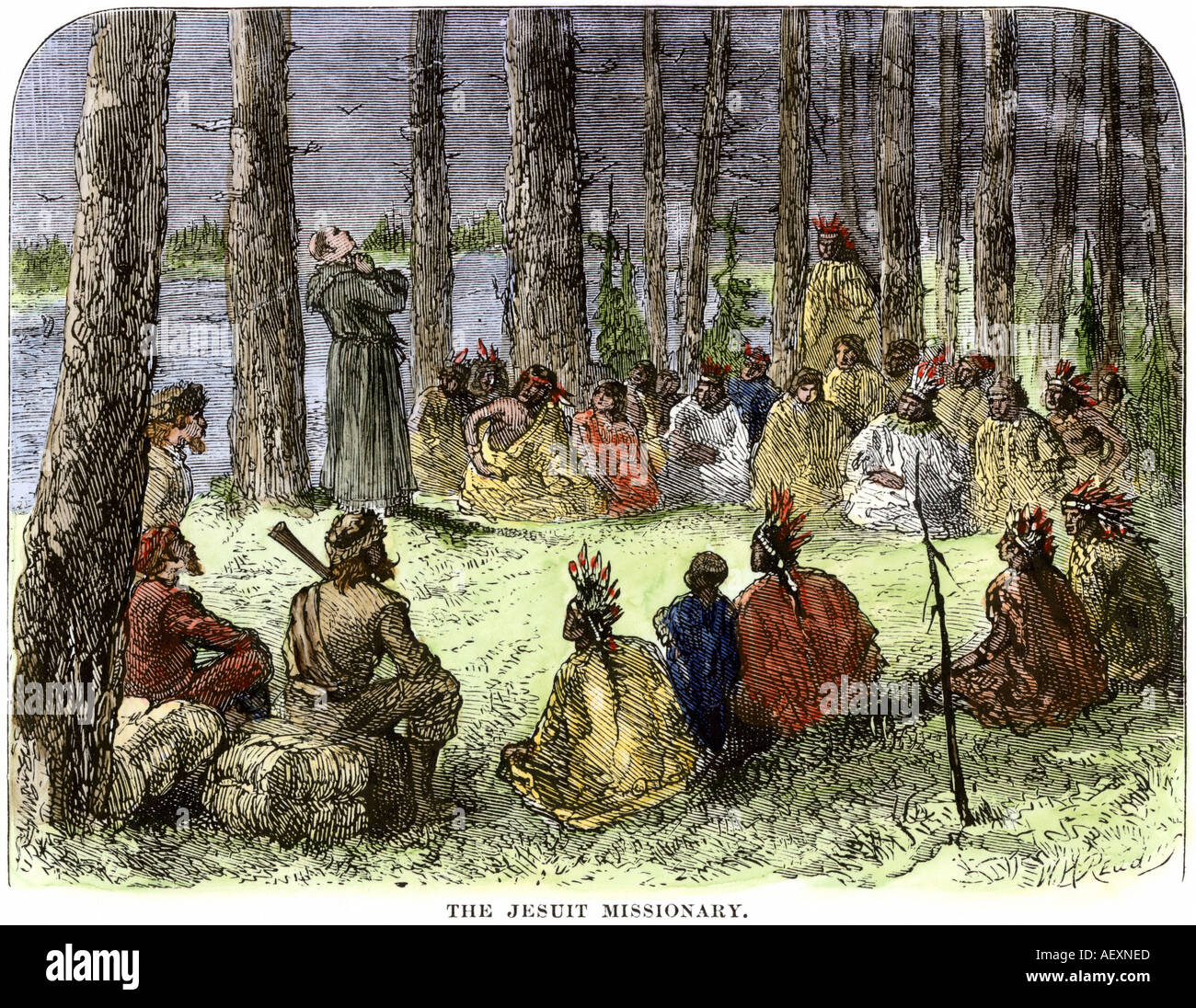
The Cross and the Continent: Early Missionary Efforts Among Native Americans
The dawn of European exploration in the Americas was not solely driven by a thirst for gold, land, or glory; it was profoundly shaped by an equally fervent, often intertwined, spiritual imperative. From the moment Columbus set foot on Bahamian shores, the "discovery" of new peoples ignited a missionary zeal among various Christian denominations, each convinced of their divine mandate to bring salvation to the "heathen" inhabitants of the New World. These early missionary efforts, spanning centuries and continents, represent a complex tapestry woven with threads of genuine piety, cultural arrogance, profound sacrifice, and devastating consequence, forever altering the spiritual and societal landscape of Native America.
The arrival of Europeans, particularly the Spanish, brought with it a doctrine enshrined in the papal bulls of the 15th century, most notably the Inter Caetera of 1493, which granted Spain and Portugal dominion over newly discovered lands on the condition that they propagate the Christian faith. This religious justification became a cornerstone of colonization, framing the subjugation of Native peoples as a benevolent act of salvation. The maxim "God, Gold, and Glory" perfectly encapsulates the trinity of motivations driving the conquistadors and the accompanying friars.
The Spanish Franciscans and Jesuits: Forging a New Spiritual Empire
The earliest and most extensive missionary endeavors were undertaken by the Spanish, primarily through the Franciscan and Jesuit orders. From the sun-baked deserts of the American Southwest to the fertile valleys of California and the jungles of Florida, friars marched alongside soldiers, often preceding them, establishing missions that served as both spiritual centers and instruments of colonial control.
The Spanish approach was often characterized by its uncompromising nature. Indigenous spiritual beliefs and practices were not merely different; they were deemed demonic, obstacles to be eradicated. Natives were to be "reduced" – a term loaded with colonial intent – to sedentary, Christianized communities known as reducciones or missions. Here, they would be taught European agricultural techniques, crafts, and, crucially, the tenets of Catholicism.

One of the most enduring and controversial figures of this era is Junípero Serra, an 18th-century Franciscan friar who founded nine missions in Alta California. Serra’s dedication to converting the Native Californians (primarily the Ohlone, Chumash, and Kumeyaay) was undeniable, yet his legacy is deeply contested. While revered by some as a saintly pioneer, Native American groups and historians often view him as an agent of cultural destruction and forced assimilation. Life in the missions, though offering some protection from other colonial abuses, was often harsh, characterized by forced labor, strict discipline, and the suppression of traditional languages and customs. Disease, particularly European pathogens against which Native populations had no immunity, decimated mission populations.
A powerful testament to Native resistance against this imposition came in the Pueblo Revolt of 1680 in New Mexico. Led by a spiritual leader named Popé, the various Pueblo peoples united to expel the Spanish from their lands, successfully driving them out for 12 years. This remarkable uprising was not merely a political rebellion; it was a profound spiritual reassertion, an attempt to cleanse their lands of Spanish influence and reclaim their ancestral ways. The Pueblo Revolt stands as a stark reminder that conversion was rarely a simple or universally accepted process.
The French Jesuits: "Black Robes" in the Wilderness
In the vast, forested territories of New France, stretching from the St. Lawrence River to the Great Lakes, the missionary landscape took on a different hue. Here, the Jesuits, known as the "Black Robes" by many Native groups, became the primary evangelizers. Unlike the Spanish, whose colonial enterprise was often built on direct conquest and large-scale settlement, the French presence relied heavily on trade (especially the fur trade) and alliances with Native nations. This necessitated a more nuanced, though still ultimately transformative, approach to conversion.
Jesuit missionaries, renowned for their intellectual rigor and adventurous spirit, often immersed themselves deeply in Native cultures. They learned indigenous languages, sometimes to an astonishing degree of fluency, creating dictionaries and grammars. They lived among the Huron, Iroquois, and Algonquin, enduring harsh winters, starvation, and the constant threat of intertribal warfare. Their annual reports, the Jesuit Relations, offer an invaluable, if biased, window into 17th-century Native life and the missionaries’ struggles.
Father Jean de Brébeuf, martyred by the Iroquois in 1649 during the Beaver Wars, epitomizes the Jesuit commitment. Brébeuf spent years among the Huron, learning their language and customs, believing that true conversion required understanding their worldview. Yet, even with this cultural sensitivity, the Jesuits still sought to dismantle traditional spiritual beliefs, viewing them as paganism. They often capitalized on epidemics, which they attributed to the Native peoples’ failure to embrace Christianity, creating a powerful, fear-driven incentive for conversion. The introduction of Christianity also fueled divisions within Native communities, sometimes exacerbating existing conflicts.
The English Puritans: "Praying Towns" and the Civilizing Mission
In the English colonies, particularly New England, missionary efforts were initially less systematic than those of the Spanish or French, but no less impactful. The Puritan settlers, driven by a fervent Calvinist faith, believed they had a divine covenant to establish a "city upon a hill" – a model Christian society. Their charter often included a clause about converting the Natives, but this was frequently secondary to their primary goal of establishing their own communities.
The Puritan approach was often predicated on the idea that Native Americans first needed to be "civilized" before they could be truly Christianized. This meant adopting English dress, language, customs, and agricultural practices. John Eliot, often called the "Apostle to the Indians," was a prominent figure in this movement. He established "praying towns" like Natick, Massachusetts, where converted Native Americans lived under Puritan law, learned English ways, and practiced Christianity.

Eliot’s most monumental achievement was the translation of the entire Bible into the Massachusett language in 1663, a feat of linguistic dedication that aimed to place Christian scripture directly into Native hands, albeit through a colonial lens. While Eliot genuinely sought to save souls, the praying towns were also seen by many Puritans as a means of controlling Native populations and preventing alliances with hostile tribes.
The outbreak of King Philip’s War (1675-1676), a devastating conflict between Native Americans led by Metacomet (known to the English as King Philip) and the English colonists, severely tested the praying town experiment. Many "Praying Indians" found themselves caught between two worlds, distrusted by both sides. Some were interned on barren islands, where many perished, and the war ultimately eroded much of the goodwill and progress Eliot had made, leading to increased suspicion and hostility towards all Native peoples.
Common Threads and Complex Legacies
Despite their denominational differences and distinct colonial contexts, these early missionary efforts shared several commonalities. All sought to replace existing Native spiritual systems with Christianity, leading to the suppression of traditional ceremonies, languages, and governance structures. All introduced new diseases that devastated Native populations, often seen by missionaries as divine judgment or an opening for conversion. And all, whether intentionally or not, served as agents of colonial expansion, weakening Native autonomy and facilitating the seizure of land.
The Native American response was rarely monolithic. Some embraced Christianity, finding spiritual solace, practical advantages, or a means of adapting to a rapidly changing world. Others selectively incorporated Christian elements into their own spiritual practices, creating syncretic traditions. Many resisted fiercely, through armed conflict, cultural preservation, or by simply refusing to convert. For some, the missionaries were seen as dangerous sorcerers; for others, as bringers of powerful new knowledge.
The legacy of these early missionary efforts is profoundly complex and deeply contested. They undeniably brought literacy and new technologies to some Native communities. They also recorded invaluable linguistic and ethnographic data, often inadvertently preserving aspects of cultures they sought to transform. Yet, these efforts also contributed to immense cultural loss, spiritual trauma, and the erosion of Native sovereignty. The "civilizing mission" often masked a deep-seated ethnocentrism that failed to recognize the inherent value and sophistication of indigenous cultures.
Today, the reverberations of these early encounters continue to shape Native American identity, spirituality, and their relationship with the wider society. The cross and the continent collided in a transformative, often tragic, embrace, leaving behind a legacy of resilience, resistance, and a persistent quest for spiritual and cultural reclamation in the wake of centuries of missionary zeal.


